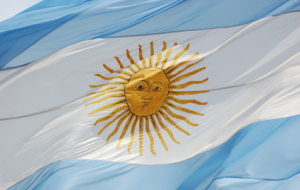Argentine drought
 The worst drought in a hundred years is threatening Argentina’s up and coming economy and causing farmers protests.
The worst drought in a hundred years is threatening Argentina’s up and coming economy and causing farmers protests.Farmers began a six-day protest on Saturday after talks about drought relief efforts with the government broke down. In addition to soya beans, farmers are withholding grain exports and partially blocking beef production as well. The protests could lead to extreme food shortages in the country where soya beans, beef and grains are vital part of the country’s diet.
In the northern Santa Fe province, less than 200 millimeters of rain have fallen this year, less than a third of the 600 millimeters that have usually fallen by this time of year. Grasses that are normally lush green are patchy brown, and cows are dying due to the lack of food. Salt has accumulated in wells due to the lack of rain, which is poisoning the remaining animals.
The most affected industry, the soya bean sector, is one of the most important to the Argentine economy. It’s emergence as a valuable export has propelled Argentina into the forefront of the Latin American economy and its loss would paralyze a country dependent on the crop for much of its gross domestic product.
More sunny and dry weather is in the forecast for Argentina, and as the country moves into the drier summer months, it is likely the drought will only continue.
You can return to the main Market News page, or press the Back button on your browser.

